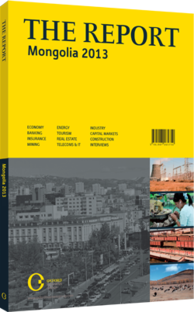OBG talks to T. Nasankhuu, President, Monfresh Group

Interview: T. Nasankhuu
What are the difficulties in raising farming output?
T. NASANKHUU: Milk, meat, cashmere, leather, wool and several vegetables are the main agricultural products. The challenge is that herders based in the countryside do not have a consistent revenue stream due to logistical deficits. During the summertime, when Mongolian milk supply for example is abundant, one litre of milk costs less than $0.20. However, production far exceeds demand and processing capabilities. As a result, 600m litres of milk are wasted every year, which accounts for an opportunity cost of around $1bn. With the help of the Asian Development Bank we are now building milk reception points in all 330 villages countrywide to capture this loss and provide local destinations for herders to sell their products.
To what extent is the government promoting the development of the sector?
NASANKHUU: Regarding the dairy products industry for example, imported equipment and machinery is not subject to any form of import or corporate tax, which benefits consumers, herders and, of course, development of the private sector itself. With respect to milk production, the government is in the process of drafting a law for a subsidy programme. If herders sell their milk to local producers they will receive an additional MNT500 ($0.36) per litre paid by the government. This will incentivise herders to produce higher amounts of quality milk and also invest into their own production capabilities. These financial incentives combined with more private investment can help Mongolia become a key player in the global milk industry, with a $1bn turnover or even more within the next decade.
How competitive are Mongolian agriculture companies on an international scale, and which export markets are of interest to producers?
NASANKHUU: Mongolia is a nomadic country, and products such as milk and meat are 100% organic, which creates a big export opportunity given the shift of consumer preferences toward natural products. To maximise this opportunity, Mongolian producers need to work on implementing international standards and receive export licences, which for many is already the case. Over the past 20 years herders were not interested in improving the productivity of their cows in terms of giving milk, however, today they are more likely to reduce the number of animals and increase productivity of each individual one instead. Given the wide landscape and the natural way of herding, a high density of animals in mass production facilities does not exist, thus reducing the risk for spreading disease among animals, which gives Mongolia another clear advantage.
Our natural export markets are Russia and China, but value-added products can also be exported to Japan or Hong Kong. Powdered milk represents an opportunity; with enough milk drying plants you can capture the oversupply of produced milk and convert it into powder, which can be used for the winter months and also exported to China, which is the largest milk powder importer in the world. They import from New Zealand, several thousand kilometres away, so why not import from Mongolia, which is only 700 km away.
Where are the biggest opportunities for the private investor to participate in the agricultural sector?
NASANKHUU: Some products like cashmere can only be harvested once a year, the same goes for leather and meat. Milk instead can be produced all year long, and is a commodity product, with one tonne of milk powder costing $4000-5000 on the global market. Given the low price of milk in Mongolia there is a strong opportunity to become an international player and potentially control 1% of the worldwide market share within a decade. A crucial step, however, is to implement better management practices and overcome logistical hurdles. Having said that, the capacity of existing milk factories is still far too small to capture and process the available milk from herders, which presents a clear opportunity for additional foreign investment.
You have reached the limit of premium articles you can view for free.
Choose from the options below to purchase print or digital editions of our Reports. You can also purchase a website subscription giving you unlimited access to all of our Reports online for 12 months.
If you have already purchased this Report or have a website subscription, please login to continue.

